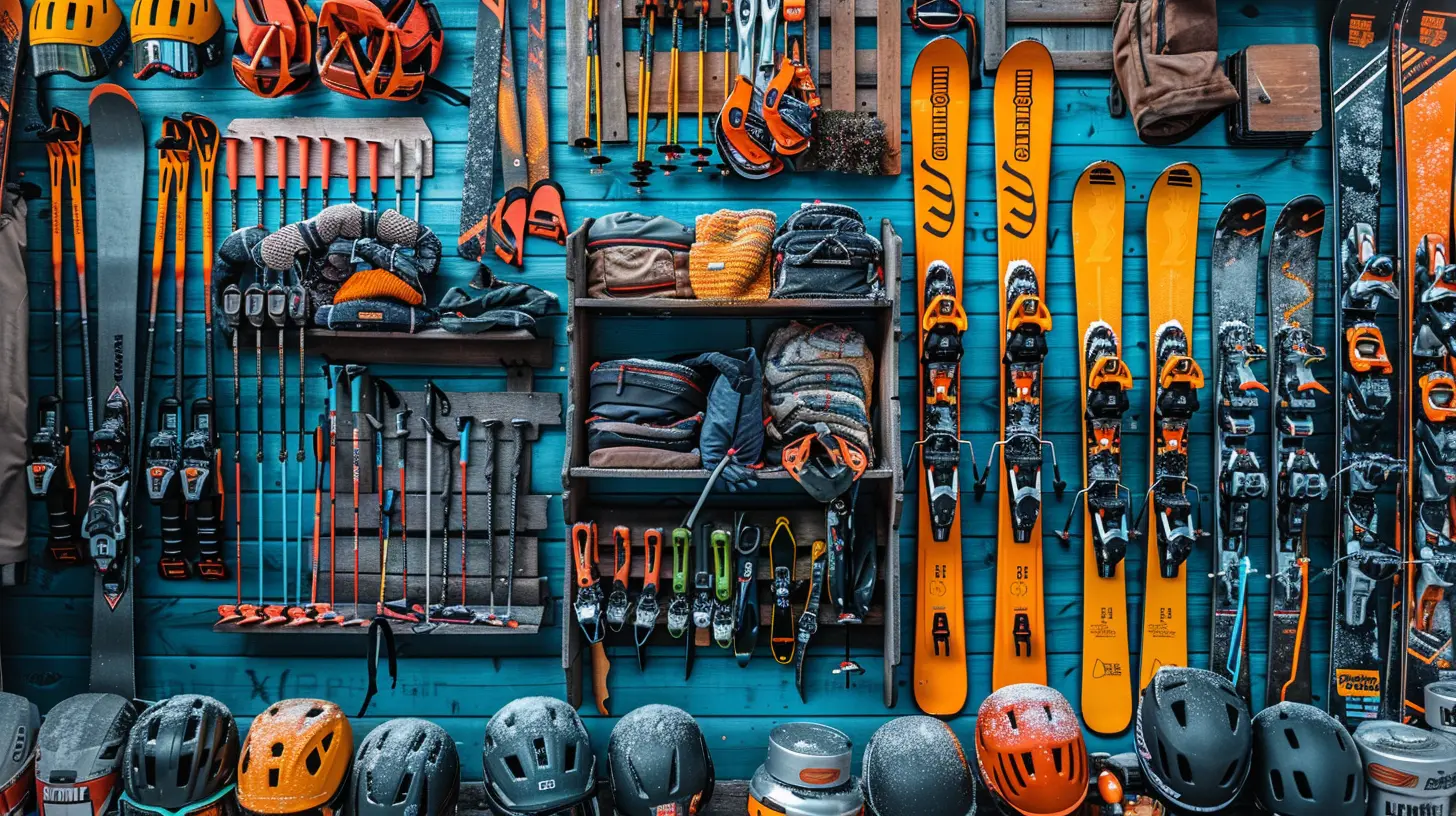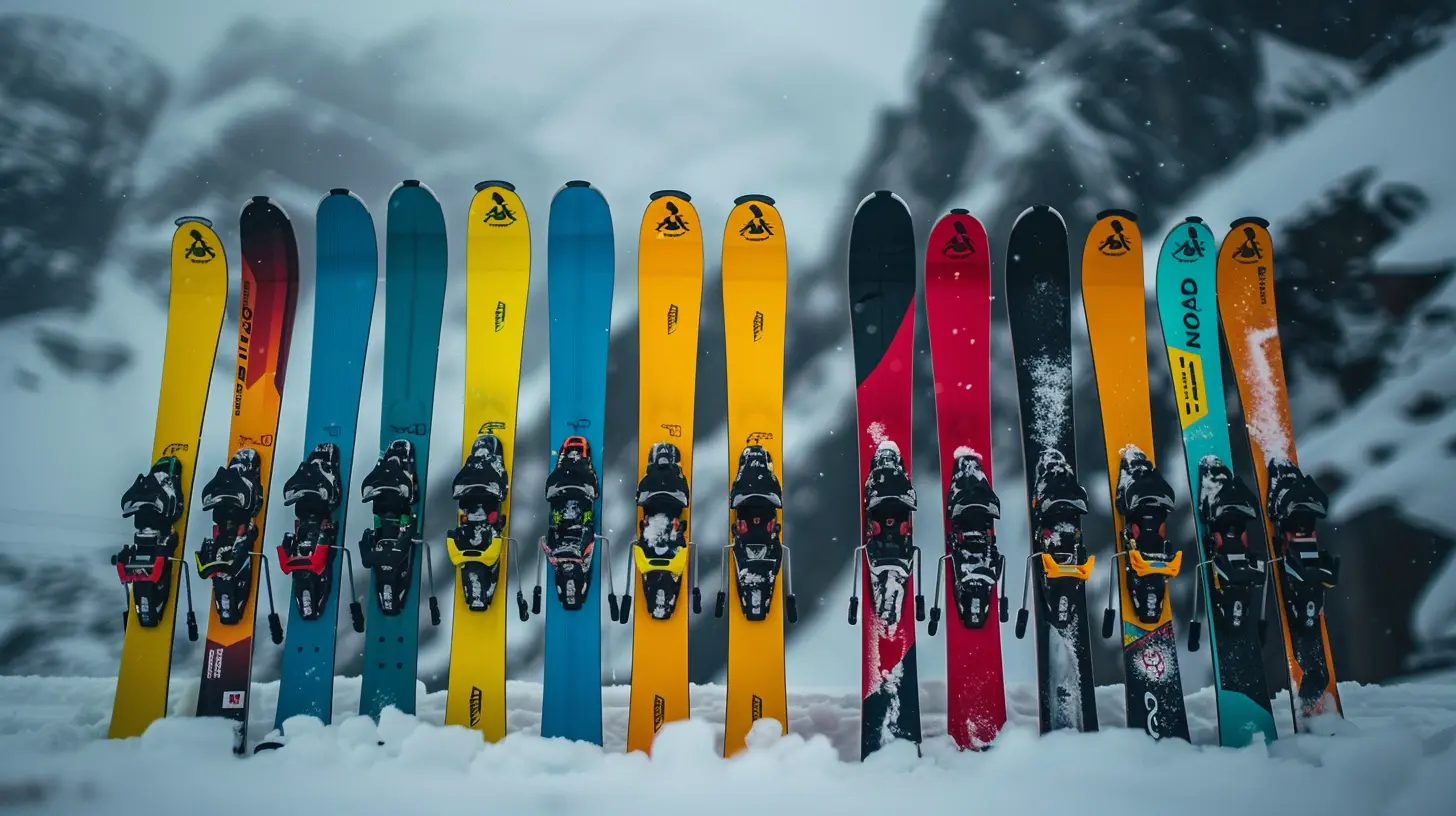The Science Behind Ski Wax and How to Choose the Right One
1 July 2025
Skiing might look like a basic glide down a snowy slope, but behind every smooth ride is a bit of scientific magic – ski wax. Whether you’re a weekend warrior or a seasoned powder hound, understanding the science behind ski wax can totally change how your skis perform. Yep, that slick, sometimes colorful stuff you melt onto your skis? It’s more important than you think.
Let’s break down what ski wax really does, why it matters, and how to pick the right one for your conditions. Trust me, it’s not just wax-on, wax-off.
Why Is Ski Wax Even a Thing?
Ever try sliding a book across a wooden table vs. a polished surface? One glides, the other drags. That’s exactly what ski wax is all about – reducing friction and controlling glide.Ski wax minimizes the resistance between your skis and the snow. Snow crystals aren't all the same – they vary depending on temperature, humidity, and snow age. Without wax, your skis fight against those crystals, slowing you down, tiring your legs, and making the ride less fun.
So yeah, adding ski wax is a bit like customizing your skis for the best possible connection to the snow beneath you.
How Does Ski Wax Actually Work?
Imagine your skis have tiny little pores. When you apply wax, it gets absorbed into the base – which is usually made of a material called P-Tex (a kind of polyethylene). Once the wax is in there, it acts like a buffer.Here’s the cool part: As you ski, a thin layer of snow melts due to friction. Wax helps manage this water layer to keep it consistent and reduce suction between ski and snow. Too much drag and you slow down. Too little grip and you lose control.
The key job of ski wax is to:
- Reduce friction for faster gliding
- Improve control and turning
- Protect the base of your skis from damage
- Repel dirt and contamination
Pretty neat, right?
The Two Main Types of Ski Wax
Before diving deep into which wax to pick, know this: there are two types – glide wax and grip wax. They’re used for different skiing styles.1. Glide Wax
Mostly used for alpine, freestyle, and cross-country skate skiing. It enhances the slide by minimizing friction. Great for downhill skiing – where speed is king.2. Grip Wax (Kick Wax)
Essential in classic cross-country skiing. It provides traction in the kick zone (center of the ski). With the right grip wax, you can push off with power yet still glide efficiently.
Breaking Down Ski Wax by Temperature
Here’s where it gets scientific – and a little confusing. Ski waxes are often categorized by snow temperature, not air temperature. Why? Because snow can act differently than the air around it. Makes sense, right?Cold Weather Wax (-15°C and below)
- Hard wax- Designed for dry, sharp snow crystals
- Reduces abrasion on the base
- Adds durability
Mid-Temperature Wax (-8°C to -2°C)
- Medium glide wax- Ideal for most recreational skiers
- Balances glide and grip well
Warm Weather Wax (0°C and above)
- Softer wax- Meant for wet, slushy snow
- Hydrophobic blend repels water like a raincoat
- Contains more fluoro compounds (in high-end waxes)
Each temperature wax is formulated to bond best with the snow’s crystal structure at that range. Think of it like wearing the right pair of shoes — sandals for the beach, boots for the snow.
Fluorinated vs. Non-Fluorinated Wax
Now, let’s talk about performance enhancers – legal ones! Some waxes contain fluorocarbons (yep, the same stuff that made non-stick pans famous).Fluorinated Wax
- Super water-repellent- Fortified glide, especially in wet snow
- Used in racing for maximum speed
- Downsides? Expensive and not eco-friendly
Non-Fluorinated Wax
- More affordable- Lower levels of water repellency
- Perfect for recreational skiing
- Better for the environment
Big heads-up: due to environmental concerns, many countries (and races) are banning fluorinated waxes. So, keep an eye on regulations if you compete.
Choosing the Right Ski Wax: What You Need to Know
Okay, now let’s get into the nitty-gritty. Picking the right ski wax isn’t about grabbing the fanciest one off the shelf.Here’s what you need to consider:
Temperature Conditions
First thing’s first – check snow and air temps before hitting the slopes. Most waxes come labeled with a temperature range, so match accordingly.Hot Tip: If you’re unsure, go with a universal wax. Not perfect, but better than going in dry (literally).
Snow Type
- Fresh powder? Use harder wax for abrasion protection.- Older, granular snow? Softer wax for better glide.
Skiing Style
- Downhill racers need speed – grab a high-performance glide wax.- Classic Nordic skiers? Mix grip and glide for best kick and slide.
Frequency of Use
If you ski once a season, there’s no need for a full wax station at home. Quick rub-on waxes or sprays will do. But if you're a regular, investing in hot waxing gear might be a good idea.Types of Ski Wax Application
Not all waxes are made equal in how they’re applied. Here’s a quick breakdown:1. Hot Wax (Iron-On)
- Requires a waxing iron- Deep penetration into the base
- Best performance and durability
- Takes time and gear
2. Rub-On Wax
- Easy and fast- Best for quick fixes or casual skiers
- Shorter glide lifespan
3. Spray-On and Paste Wax
- Mid-tier option- Quicker than hot wax, better than rub-on
- Good for multi-day trips or warm conditions
4. Liquid Wax
- Fast application- Good performance but doesn't last as long
- Ideal for training or daily skiing
Put simply: if it’s race day or a big ski weekend, go hot wax. Just going out to cruise? Rub-on or paste is your friend.
The Role of Structure and Wax Together
Here's something many skiers overlook – ski base structure. Wax alone won't get the job done if your base isn’t tuned correctly.Ever notice those tiny grooves on the bottom of a ski? That’s not wear and tear – it’s intentional. Structuring helps channel water away, kind of like tire treads. When combined with the right wax, it controls suction and boosts glide.
Wax and structure work as a team. Wax is the butter; structure is the toast. You need both for a perfect result.
Common Mistakes to Avoid
Even experienced skiers get it wrong sometimes. Here are a few common wax-related oopsies:- Ignoring Snow Temp: Always check the snow, not just air temperature.
- Overusing Fluorinated Wax: Great for racing, but not always necessary.
- Skipping Wax Altogether: Ski bases dry out and degrade without wax.
- Wrong Application: Lathering on wax without ironing or applying it unevenly can lead to patchy performance.
- Not Brushing Out Wax: After waxing, always scrape and brush. If not, you’re leaving draggy wax on your base.
Eco-Friendly Options & The Future of Ski Wax
As skiing gains popularity, so does its environmental footprint. Traditional waxes (especially fluorinated ones) can leave persistent chemicals in the snowpack that eventually end up in waterways.Luckily, the industry is catching on. New biodegradable and fluoro-free waxes are hitting the market — and they’re getting better every season.
Brands like Swix, Toko, and MountainFLOW are leading the charge in offering high-performance, eco-conscious waxes. If you’re skiing casually, there’s really no reason not to go green.
Final Thoughts: Choose Smart, Glide Smooth
Ski wax might seem small, but it plays a huge role in how your skis behave. With the right wax, you're not just sliding – you're dancing with the mountain. Whether you're racing gates or just carving with your crew, tuning into wax science gives you an edge.So, next time you’re prepping for the slopes, ask yourself:
> What’s the temp? What’s the snow like? Am I out here for speed or for fun?
Match your wax to your ride, and your skis will thank you.
all images in this post were generated using AI tools
Category:
SkiingAuthor:

Easton Simmons
Discussion
rate this article
1 comments
Faryn Tucker
Choose wisely, ski faster!
July 12, 2025 at 4:43 AM

Easton Simmons
Absolutely! The right ski wax can make all the difference in speed and performance on the slopes!

![The Heart and Hustle of [Player Name]: A Profile in Perseverance](/pictures/blog/small/the-heart-and-hustle-of-player-name-a-profile-in-perseverance_4.webp)
